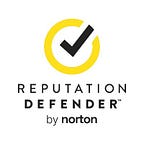Improve your SEO With This New Awesome Checklist
People are always consulting Reputation Defender about the best SEO Checklist to improve their website traffic. First you need to go through the optimization of your page, and then balance your activities between on-site and off-site.
The on-site ranking factors are more easily addressed. These ranking factors are the elements on your website that influence the position of your site on search engine results, like the text and keywords that you use, elements like images and videos, the number of webpages on your website, the links on your web pages to other pages of your site, the links on your web pages to other websites, the navigational structure of your website, the robots.txt of your site, and the HTML code of your web pages. All of these factors can influence the position of your website on search engines, and can be improved without a lot of effort. However, off-site ranking factors are more difficult to address and require considerable time, because are largely beyond your control. Theses factors include the number and quality of backlinks that point to your website, mentions of your website on social media sites, and the number of good feedback like Likes, Google +1, etc.
The right balance between these two, leads to the best results. Optimized on-site factors make it easy for search engines to list your website for the right keywords, and improved off-site factors show search engines that other people also find your website relevant to a particular topic.
Checklist
Now that you have the perfect balance for your website, prepare to follow this checklist of activities as best as you can. Remember that if you can’t follow it to the letter, you will still find good results.
- Setup the Gmail filters for your website
- Install Google Analytics
- Install Google Search Console
- Install Bing Webmaster Tools
- If you are using WordPress, install the plugins to help you with the task
- Check your Console for 404 / 500 errors, duplicate content, missing titles and other technical errors
- Use tools like Browseo to find even more technical errors
- Use the Screaming Frog tool to find broken links, errors and crawl problems on your website
- Use the Keyword Planner. Start with a lower volume of keywords
- Visit your competition and start building a link database. See the anchor text they are using
- Include your primary keyword in your page URL
- Optimize your title tags to 65 characters or less
- Optimize your meta description to 155 or less
- Use the heading tag (H1 tag), include your keyword in it
- Give the search engine at least 100 words of healthy accessible text on your website, so it can understand the topic of your page
- Use synonyms of your keywords in your content
- Use descriptive ALT tags and filenames for your images
- Link to your internal pages using SEO methods, with anchor text
- Check the ClickMinded link building strategy to learn how to improve your off-site optimization
- Use the Google Webmaster Tools to fix any duplicated indexed content. Use 301 redirects or canonical tags
- Use absolute URLs in your code instead of relative ones
- Test the speed of your site with PageSpeed tools
- Create an XML sitemap and submit it to Google and Bing webmaster tools. You can use XML-Sitemaps.com or the WordPress plugin
- Create the Robots.txt file and submit it to Google and Bing webmaster tools
- Claim the name of your brand or username on the major networks using a “brand-name” like structure. Here is a list of recommended major networks:
twitter.com/
facebook.com/
yelp.com/biz/
youtube.com/
linkedin.com/
wordpress.com/
tumblr.com/
pinterest.com/
hulu.com/
about.me/
profile.typepad.com/
stumbleupon.com/stumbler/
etsy.com/people/
en.gravatar.com/
scribd.com/
livejournal.com/
hubpages.com/
flickr.com/photos/
photobucket.com/ - Make your site mobile friendly, check it using BrowserStack
- Add Authorship Markup to your site using the Authorship Markup Walkthrough
- Enter some keywords in the search engine without pressing “Enter”. Write down the related suggestions to improve your keyword list
- Use variations of formats, like images, videos, PowerPoint, Prezi presentations
- Take part in forums related to the content of your website. Make sure to mention your site along with useful answers in the topics of those forums
- Follow influencers and relevant social media accounts
- Set up a social media calendar using one of the many available tools for social media scheduling
- Use some of the SEO Audit tools one your website is live
- Review the free SEO tools before completing the audit
- Use the beginner´s guide to SEO to comprehend some of the high level concepts of the field.
Try to complete this checklist, and don’t forget to manually reach out to influencers and people you mention in your content and let them know about the content you publish. Maybe they want to share your content if they enjoy it.
